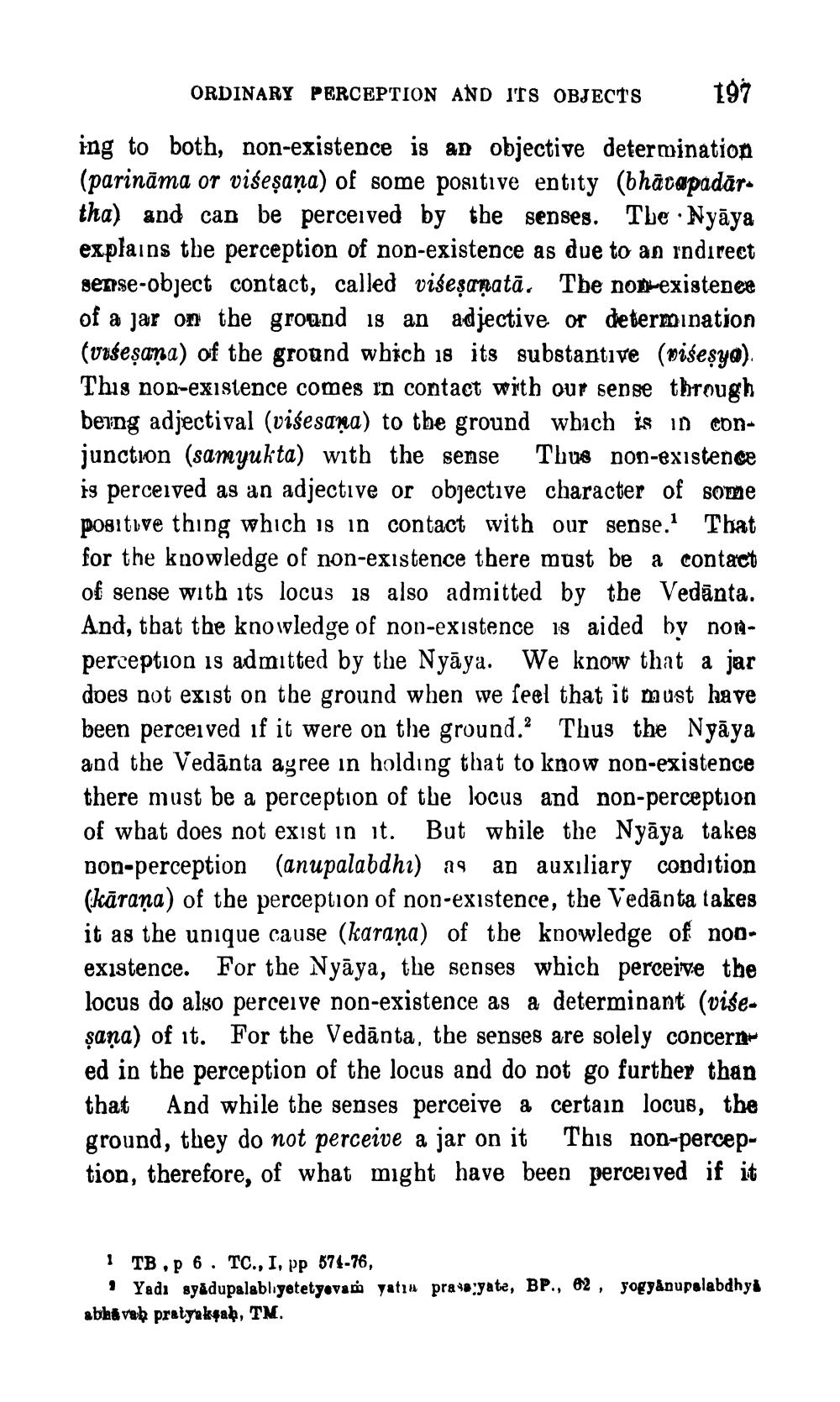________________
197
ORDINARY PERCEPTION AND ITS OBJECTS
ing to both, non-existence is an objective determination (parināma or viseṣana) of some positive entity (bhāvapadār tha) and can be perceived by the senses. The Nyaya explains the perception of non-existence as due to an indirect sense-object contact, called viseṣaṇata. The non-existence of a jar on the ground is an adjective or determination (viseṣana) of the ground which is its substantive (viseṣya). This non-existence comes in contact with our sense through being adjectival (visesana) to the ground which is in conjunction (samyukta) with the sense Thus non-existence is perceived as an adjective or objective character of some positive thing which is in contact with our sense.1 That for the knowledge of non-existence there must be a contact of sense with its locus is also admitted by the Vedanta. And, that the knowledge of non-existence is aided by nonperception is admitted by the Nyaya. We know that a jar does not exist on the ground when we feel that it must have been perceived if it were on the ground. Thus the Nyaya and the Vedanta agree in holding that to know non-existence there must be a perception of the locus and non-perception of what does not exist in it. But while the Nyaya takes non-perception (anupalabdhi) as an auxiliary condition (karana) of the perception of non-existence, the Vedanta takes it as the unique cause (karana) of the knowledge of nonexistence. For the Nyaya, the senses which perceive the locus do also perceive non-existence as a determinant (visesana) of it. For the Vedanta, the senses are solely concern ed in the perception of the locus and do not go further than that And while the senses perceive a certain locus, the ground, they do not perceive a jar on it This non-perception, therefore, of what might have been perceived if it
1 TB, p 6. TC., I, pp 574-76,
1 Yadı syadupalabliyetetyevam yatıa prasa yate, BP., 62, yogyanupalabdhya abhavah pratyakṣaḥ, TM.




